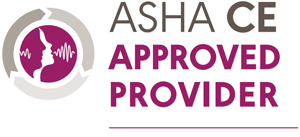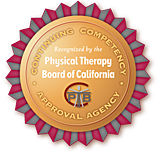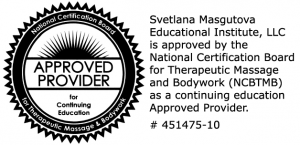


Event Registration

Educational Institute LLC
2.4 ASHA CEUs



MNRI® Reflex Integration and Immunology • Online
Class Schedule: Friday-Sunday, July 15-17, 2022. 9:00 AM to 5:30 PM EDT (Meal Breaks Included).
A digital copy of the manual is included with your registration.
Hard copies are available for purchase following registration.
Dates: July 15-17, 2022
Dates: Course begins at 9:00 am Eastern Time
Location: Online Course
Instructor: Trina Deiss
CEUs: This course is offered for ASHA CEUs
(Introductory level, Professional area)
This course is offered for AOTA CEUs / Contact Hours
(Introductory; Occupational Therapy Process: Evaluation, Intervention)
CE Hours: This course is offered for 24 NCBTMB CE Hours
- MNRI® Dynamic and Postural Reflex Integration
- MNRI® NeuroTactile Integration
- MNRI® Stress Hormones and Reflex Integration
The Masgutova Method® is a set of programs focused on the restoration and maturation of primary movements, reflexes, coordination systems, skills for optimal performance of natural mechanisms, developmental processes, brain functioning, and sensory-motor integration. You can read more about Reflexes and MNRI HERE.
Watch an overview of how MNRI works
The Mission of the Svetlana Masgutova Educational Institute (SMEI) is to provide health, wellness and educational professionals, parents, and caregivers with non-invasive techniques to address maturational, developmental, and life challenges.
MNRI®: Native and Adaptive Immunity Support
Using the Neurosensorimotor Reflex Integration
Authors of the Program:
Elina Akhmatova, Student of Medical University,
Nelli Akhmatova, Immunologist-virusologist, Ph.D. (Moscow, Russia),
Elvin Akhmatov, Ph.D. in Immunology,
S. Masgutova, Ph.D in Psychology (Orlando, USA)
The Masgutova Method® is a set of programs focused on the restoration and maturation of primary sensory-motor patterns, reflexes, and skills for optimal performance of developmental mechanisms immunity, and brain functioning.
The Masgutova Method® is oriented on research and creating therapy techniques aimed at:
1) Strengthening the nerve and immune system
2) Stress and immune system resilience
3) Neuroplasticity, neurodevelopment and enhancement of learning process.
The MNRI® therapy modality system for accomplishment of these goals uses the idea of support of neurophysiological reflex circuit functions and its neurological maturation (on level of extrapyramidal level of the nerve system).
System for MNRI® Program is based on understanding that the reflex being the unit of the nerve system functioning must be neurologically matures in order to regulate its work, resilience in stress, survival, and flexibility for learning. Thus the object and subject of studies and therapy work in the MNRI® Therapy Modality is the neurosensorimotor reflex integration.
The Mission of the MNRI® Program is to provide individuals reliable knowledge and safe tools for the use of natural, genetic sensory-motor resources to facilitate successful neurosensorimotor development, resilience of immune system, stress-management and successful learning.
Course Objectives
The immune system of a human presents systems of biological structures and mechanisms given to an organism genetically to protect against disease. This system is made up of special cells, proteins, tissues, and organs, defends a human health and life against germs, microorganisms and other invaders every day. To fulfill the “detective task’ it must recognize and decode a wide variety of agents, such as: pathogens, viruses, parasitic worms, and distinguishes them from the organism's own healthy tissue. This is why to keep the immune system properly functioning and to know the means targeted at supporting its health is essential.
In most cases, the immune system keeps people healthy and prevents infections, but too strong or too long lasting stress and harmful antigens can cause problems for the immune system and lead to illness, infection and inflammation.
Immune system of a human organism is studied by the human immunology - a branch of biomedical science. This program gives the brief information concerned different aspects of the immunity based on immunological research in science and particularly in the MNRI®.
Immunity as a natural mechanism given genetically to protect our health and bodies from dangerous and foreign substances – from antigens of exogenous (external) and endogenous (internal) origin, particularly:
- homeostasis (balance of all processes of the organism),
- structural and functional integrity of the organism,
- the genetic uniqueness of every organism and the human species as a whole.
One of the most important cells involved in the work of the immune system are leukocytes or white blood cells, which seek out and destroy disease-causing organisms or substances. These cells are produced and stored in many ‘lymphoid organs’, such as: the thymus, spleen, and bone marrow. The leukocytes are housed in clumps of lymphoid tissue, lymph nodes throughout the body. They circulate through the body between the organs and nodes via lymphatic vessels and blood vessels monitoring the body for germs or substances that might cause danger for health. The two basic types of leukocytes are known: 1) phagocytes, cells that ‘chew up’ invading organisms, 2) lymphocytes, cells that allow the body to remember and recognize previous invaders and help the body destroy them.
An antigen being any substance triggering an immune system to produce antibodies against it, is an organic nature biopolymer, genetically foreign to the macroorganism that recognized by the immune system and cause immune reactions, aimed at its elimination.
The human immune system - a specialized lymphoid tissue distributed throughout the body in a variety of lymphoid cells and selected entities accounts for 1-2% of body weight.
Organs and tissues of the immune system located in various parts of the organism are:
- Blood-forming bone marrow, where the stem cell (SCC) rising to all blood corpuscles, and also the immune cells, certain phagocytes and dendritic cells are found. The bone marrow affects the B (detects plasma cells) and T lymphocytes ().
Encapsulated organs: the thymus (immunological ‘training’ of T-cells of the immune system), spleen (), lymph nodes (located along the lymph vessels act as a biological sieve filtering for antigens, and promotes maturation of B lymphocytes).
- Lymphoid tissue - of the digestive tract (MALT - Gut-Associated Lymphoid Tissue), tonsils, appendix, Peyer's patches, lamina propria («lamina propria") bowel, lymphoid follicles.
- Lymphoid tissue associated with the bronchi and bronchioles (BALT - Bronchus-Associated Lymphoid Tissue).
- Lymphoid tissue associated with female sexual ways (VALT - Vulvovaginal-Associated Lymphoid Tissue);
- Lymphoid tissue associated with the nasopharynx (NALT - Nose-Associated Lymphoid Tissue).
- A subpopulation of lymphocytes and other immune system cells within the liver, "serving" as lymphoid blood barrier portal vein, all carrier substances absorbed in the intestine.
- Lymphoid subsystem skin - lymphoid tissue associated with the skin (SALT - Skin-Associated Lymphoid Tissue) - intraepithelial lymphocytes and regional lymph nodes and lymphatic drainage.
- Peripheral blood - transport and communications component of the immune system.
Organs of the immune system work within its central and peripheral systems:
1) Central:
- Hematopoietic bone marrow
- Thymus
2) Peripheral:
- Spleen
- Lymph nodes
- Appendix
- Liver
- Tonsil pharyngeal ring
- Group lymph follicles
- Blood
- Lymph
The numerous research done for immunology studies of the effect of the MNRI® neurosensorimotor reflex integration program has shown significant progress in health of children and adults, particularly in study of:
1) Chronic inflammatory respiratory diseases
2) Innate and Adaptive Immunity in Herpes-Associated Multiform Erythema
3) Immune status improvement in Children with Down Syndrome
These diseases afflicting thousands and millions of people worldwide are caused by poor immune system regulation. Treatment for these diseases has been primarily pharmacologic to date, although some dietary, nutritional, and supplemental therapies have been used. The immunology comparative studies have shown the effectiveness of MNRI® intervention, which is based on the neurobiologic activation of the primary motor system and the integration of reflexes, with that of standard treatment of chronic bronchial asthma or chronic bronchitis in children and adults, and herpes-associated multiform erythema in adults.
The results revealed that MNRI® intervention enhances the effects of standard drug treatment on immune system cells, in particular, normalizing:
- the number of Т lymphocytes (CD3, CD4, CD8) and NK-cells
- the metabolic function of leukocytes
- the level of regulatory and anti-inflammatory cytokines.
This MNRI® Program for support of the immune system proposes exercises and procedure that can be used in steps or extracted and used individually depending on the goal of the work with the client. It is based on concepts of reflex integration and their possible role in immune system support. Previous research shows that the MNRI® programs (Reflex Repatterning and NeuroStructural Reflex Integration, NeuroTactile Integration) decrease the inflammatory process in patients for over 50% within 4-5 days of the intensive MNRI work (6 hours daily).
Upon successful completion of the 14 hours for the MNRI®: Native and Adaptive Immunity Support Using the Neurosensorimotor Reflex Integration: course, participants will:
- Learn
about innate and adaptive immunity:
- Immune system definition
- Immune system role for a human health
- Types of immunity (Th 1 and Th 2)
- Organs of immune system, classification
- Dysfunctions of immune system
- Immune system resilience and effect of stress on innate an adaptive immunity
- HPA Stress-axis (hypothalamus-pitiutiry gland-adrenals) and neuro-immune response.
2. Learn about the Masgutova Neurosensorimotor Reflex Integration (MNRI®) Method
- the innate nature of the sensory-motor reflex system
- the role of a reflex and its sensory, motor, and central nervous system mechanisms
- when, why, and how the brain engages in protection and causes challenges for immunity and neurodevelopment
- the physiological basis for primary sensory-motor reflexes, their protective functions and coordination with innate and adaptive immunity
- the role of neurological maturation of sensorimotor reflex circuit pathways and the effect of dysfunctional reflex patterns on:
- innate immune system development and regulation
- adaptive immune system regulation
- behavioral and emotional regulation
- neurodevelopment and learning abilities
2. Learn the concepts and information concerning the organs of the immune system work within its central and peripheral systems:
- Central: hematopoietic bone marrow
- Thymus
2) Peripheral: spleen, lymph nodes, appendix, liver, tonsil pharyngeal ring, group lymph follicles, blood, lymph
3. Learn the progression of maturation in reflex patterns and neuroimmunity.
a. Identify developmental markers for reflex patterns and their affect on Immunity
b. Understand and explain the impact reflex maturation and integration (vs. delayed development and reflex inhibition) of each reflex can have on systems of immunity
This MNRI® Program proposes new information and procedure to support the immune system.
Its Immune System Regulating MNRI® Procedure, particularly targets the following systems:
- A. Central Immune Systems:
Exercise 1. Preparatory: A) Front-Back Tendon Guard. B) Upper and Lower limbs
Exercise 2. Thymus support (Fear Paralysis and Moro)
Exercise 3. Bone marrow – (based on information on neuroembryology of bones and bone marrow growth; Spinal Galant, Spinal Perez, TLR).
- B. Peripheral Immune Systems:
Exercises for activation of organs above the diaphragm to support immunity
Exercise 3. Nasal cavity activation (Breathing Reflex)
Exercise 4. Tonsil pharyngeal ring support (Swallowing and breathing reflexes), and Throat – Clavicle-sternomastoidus CSM-muscle activation (Breathing and swallow reflexes).
Exercises for activation of organs below the diaphragm to support immunity:
Exercise 5. Liver support (Liver points tapping; Fear Paralysis, Core Tendon Guard)
Exercise 6. Spleen support (Fear Paralysis, Core Tendon Guard)
Exercises for lymph system - whole body
Exercise 7. Lymph nodes (Tendon Guard, Head Righting - under-clavicle and collar area activation) and group lymph follicles (Embrace Squeeze for lymph system, Breathing Reflex, sequential muscle compression)
Exercise 8 Blood (Rhythm/Reflex Dance)
Exercise 9. Lymph (Rhythm/dance – TLR and Fear Paralysis).
MNRI® Reflex Integration & Immunology
- Describe the Masgutova Neurosensorimotor Reflex Integration (MNRI®) Method and the innate nature of the sensory-motor reflex system.
- Explain the role of a reflex and its sensory, motor, and central nervous system mechanisms as it affects the brain for protection and survival.
- Describe the innate and adaptive immunity with overall human health and learning challenges.
- Define the Immune system and its role in human health.
- Describe human health and the effect on development.
- Compare the types of immunity - innate and adaptive (Th 1 and Th 2) and their effect on physical, cognitive and emotional health.
- Explain immune system resilience and the effect of stress on innate and adaptive immunity.
- Describe the HPA Stress-axis (hypothalamus-pituitary gland-adrenals) and neuro-immune response and its effect of cognitive, physical and emotional health.
- Describe the effects of the HPA Stress-axis on development and learning.
10. Explain the reflex profiles of children with traumatic stress and PTSD and the effects on immunity and overall development.
11. Explain the role of neurological maturation of sensorimotor reflex circuit pathways.
12. Describe the effect of dysfunctional reflex patterns on innate immune system development and regulation, adaptive immune system regulation, behavioral and emotional regulation, and neurodevelopment and learning abilities and skills.
13. Describe the concepts about the organs of the immune system and how they affect the work central and peripheral systems.
14. Explain the work of the central nervous system and its effect on hematopoietic bone marrow and the Thymus.
15. Explain the work of the peripheral nervous system and its effect on the spleen, lymph nodes, appendix, liver, tonsil pharyngeal ring, group lymph follicles, and blood.
16. Explain the progression of maturation in reflex patterns and neuroimmunity.
17. Identify developmental markers for reflex patterns and their effect on Immunity
18. Explain the impact reflex maturation and integration (vs. delayed development and reflex inhibition) of each reflex can have on systems of immunity.
19. Explain the importance of reflex maturation and integration and the effects on overall development.
20. Explain how this effects learning and cognitive skills.
21. Apply hands-on-training for the Central Immune Systems, Peripheral Immune Systems, and the Lymph System.
22. Demonstrate course knowledge to create and apply an individual MRNI® program for clients with various challenges.
23. Complete an individual MRNI® program based on assessment results and targeted individual challenges.
Prerequisite: MNRI® Level 3 and MNRI®: Stress Hormones Regulation Through Reflex Integration.
Course Length: The course covers a period of 24 hours of direct classroom instruction.
|
Content |
|
|
Hours 1-3 |
Masgutova Method and Immunology |
|
Hours 4-5 |
Children with immune challenges and the effects on overall development |
|
Hours 6-7 |
Types of Immunity |
|
Hours 8-10 |
Traumatic stress and PTSD and the effects on the immune system and overall development |
|
Hours 11-13 |
Neurological Maturation |
|
Hours 14-16 |
Nervous System |
|
Hour 17 |
Neuroimmunity |
|
Hours 18-20 |
Reflex Maturation and Immunity |
|
Hours 21-24 |
Immunity Protocol |
Target Audience:
Speech Language Pathologists, Speech Language Pathologist Assistants, Occupational Therapists, Certified Occupational Therapy Assistants, Nurses, Physical Therapists, Physical Therapist Assistants, Educators, Psychologists, Physicians, Massage Therapists, Mental Health Counselors, Other Health Care Providers, Parents.
Criteria for Certificate of Completion and any available Credit Hours or CEUs:
• Full attendance to the entire course
• Participation in practice with instructor feedback
• Post course evaluation
Financial Disclosure: Trina Deiss receives a stipend based upon an enrollment percentage.
Non-financial Disclosure: No relevant relationship exists.
Course Disclosure: The Svetlana Masgutova Educational Institute has developed and patented a licensed technology trademarked as MNRI®. Because there are no other like-kind methods available, course offerings will only cover information that pertains to the effective and safe use of the above-named Method. This presentation will focus exclusively on MNRI® and will not include information on other similar or related methods or services.
Special Needs Requests: If you require special accommodations, please notify SMEI at events@masgutovamethod.com at the time of registration so that needed accommodations can be made prior to the course.
SMEI Cancellation and Refund Policy
Online courses are subject to cancellation due to lack of minimum required participants registered for the course within 2 days of the course start date. Full refunds will be issued if the course is canceled due to the low number of attendees.
- Participants will receive a full refund for registration cancellation up to 5 days prior to the event.
- A 10% administration charge will be retained for cancellations within 3-4 days prior to the course.
- A 25% administration charge will be retained for cancellations within 2 days prior to the course.
Transferring Policy
Participants who wish to transfer registration and payment to another
SMEI course may do so up to 5 days prior with no penalty. If within the
5 days, a 10% administration fee will be charged.
*Participant must have selected the course they wish to transfer to at the time of the request. All refunds will be held until the transfer course has been selected.
* A 2.5% transaction fee (processing fee) will be withheld on all refunds that were processed using credit card/PayPal. If a participant wishes the refund to be paid directly to their account via credit card/PayPal, PayPal may also charge the participant an additional 2.5% transaction fee (processing fee). Refund by check is available upon request. For questions contact us.

